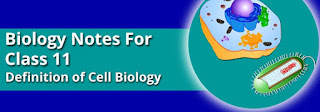Historical Background and Discovery of Cell - Class 11 Biology
Aristotle (384-322 B.C.) and Paracelsus, two ancient Greek philosophers, believed that the complex structure of animals and plants is made up of a few repeating elements. These were an organism's macroscopic structures, such as roots, leaves, and flowers for plants, and organs for animals.
Conrad Gesner (1516-1565), a Swiss biologist, researched the structure of a kind of protists termed foraminifera after the introduction of magnifying lenses in 1558.
The compound microscope, invented in 1590 by Francis Janssen and Zacharias Janssen, aided in the advancement of cell biology research.
Marcello Malpighi (1628-1694), an Italian microanatomist, examined thin slices of animal tissues from organs such as the brain, kidney, spleen, and lungs, as well as plant tissues, and proposed that they were made up of structural units he called "utricles."
Cell was coined by Robert Hooke (1635-1703), an English microscopist (cell in Latin means – empty cavity).
A small slice of dry cork was examined under a compound microscope by Robert Hooke. In 1665, he published Microphagia, a compilation of articles, one of which depicted cork as a honeycomb of chambers or cells. Hooke compared the cells he saw to animal veins and arteries, noting that they were filled with "juices" in living plants.
Microscopic organisms in rainwater collected from tubes placed into the soil during rainfall were described by Anton van Leeuwenhoek in 1675. Numerous bacteria, protozoa, rotifers, and Hydra were included in his sketches. He was also the first to witness the movement of blood cells in mammals, birds, amphibians, and fish, noting that those of fish and amphibians were oval in shape and had a core body (today dubbed the nucleus), while those of humans and other mammals were round. He also paid attention to the striated muscles.
Read more about Class 11 Biology Historical Background and Discovery of Cell

Comments
Post a Comment
Thank you we will contact ASAP.